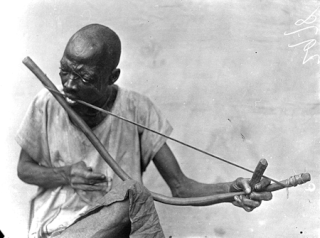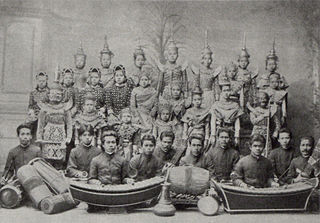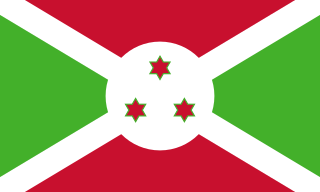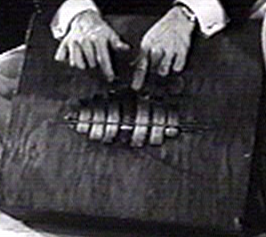
The musical bow is a simple string instrument used by a number of African peoples, which is also found in the Americas via the slave trade. It consists of a flexible, usually wooden, stick 1.5 to 10 feet long, and strung end to end with a taut cord, usually metal. It can be played with the hands or a wooden stick or branch. It is uncertain if the musical bow developed from the hunting bow, though the San or Bushmen people of the Kalahari Desert do convert their hunting bows to musical use.
Given the vastness of the African continent, its music is diverse, with regions and nations having many distinct musical traditions. African music includes the genres amapiano, jùjú, fuji, afrobeat, highlife, Congolese rumba, soukous, ndombolo, makossa, kizomba,Taarab and others. African music also uses a large variety of instruments from all across the continent. The music and dance of the African diaspora, formed to varying degrees on African musical traditions, include American music like Dixieland jazz, blues, jazz, and many Caribbean genres, such as calypso and soca. Latin American music genres such as cumbia, salsa music, son cubano, rumba, conga, bomba, samba and zouk were founded on the music of enslaved Africans, and have in turn influenced African popular music.
In music, a bow is a tensioned stick which has hair coated in rosin affixed to it. It is moved across some part of a musical instrument to cause vibration, which the instrument emits as sound. The vast majority of bows are used with string instruments, such as the violin, viola, cello, and bass, although some bows are used with musical saws and other bowed idiophones.
Ethiopian music is a term that can mean any music of Ethiopian origin, however, often it is applied to a genre, a distinct modal system that is pentatonic, with characteristically long intervals between some notes.

The music of Thailand reflects its geographic position at the intersection of China and India, as well as historical trade routes including with Africa, Greece and Rome.

The music of Albania is associated with the country of Albania and Albanian communities. Music has a long tradition in the country and is known for its regional diversity, from the Ghegs in the North to the Tosks in the South. It is an integral part of the national identity, strongly influenced by the country's long and turbulent history, which forced Albanians to protect their culture from their overlords by living in rural and remote mountains.
Georgia has rich and still vibrant traditional music, primarily known for arguably the earliest polyphonic tradition of the Christian world. Situated on the border of Europe and Asia, Georgia is also the home of a variety of urban singing styles with a mixture of native polyphony, Middle Eastern monophony and late European harmonic languages. Georgian performers are well represented in the world's leading opera troupes and concert stages.

Pygmy music refers to the sub-Saharan African music traditions of the Central African foragers, predominantly in the Congo, the Central African Republic and Cameroon.

Burundi is a Central African nation that is closely linked with Rwanda, geographically, historically and culturally. The drum such as the karyenda is one of central importance. Internationally, the country has produced the music group Royal Drummers of Burundi.

The marímbula is a plucked box musical instrument of the Caribbean. In Cuba it is common in the changüí genre, as well as old styles of son. In Mexico, where it is known as marimbol is played in son jarocho; in the Dominican Republic, where it is known as marimba, it is played in merengue típico, and in Jamaica it is known as rumba box and played in mento.

Chad is an ethnically diverse Central African country. Each of its regions has its own unique varieties of music and dance. The Fulani people, for example, use single-reeded flutes, while the ancient griot tradition uses five-string kinde and various kinds of horns, and the Tibesti region uses lutes and fiddles. Musical ensembles playing horns and trumpets such as the long royal trumpets known as "waza" or "kakaki" are used in coronations and other upper-class ceremonies throughout both Chad and Sudan.
Banda is a subgenre of regional Mexican music and type of ensemble in which wind and percussion instruments are performed.

In many parts of sub-Saharan Africa, the use of music is not limited to entertainment: it serves a purpose to the local community and helps in the conduct of daily routines. Traditional African music supplies appropriate music and dance for work and for religious ceremonies of birth, naming, rites of passage, marriage and funerals. The beats and sounds of the drum are used in communication as well as in cultural expression.
Italian music terminology consists of words and phrases used in the discussion of the music of Italy. Some Italian music terms are derived from the common Italian language. Others come from Spanish, or Neapolitan, Sicilian, Sardinian or other regional languages of Italy. The terms listed here describe a genre, song form, dance, instrument, style, quality of music, technique or other important aspect of Italian music.
Baka music is the music of the Baka people who come from the southwestern Central African Republic. Most Baka music is vocal and it is polyphonic. The music is based on repetitive melody and rhythm, with little variations and a lot of improvisation. Music and dance is important to them. It is done to prepare for a hunt or show a skill. Music is also used in daily life for healing rituals, initiation rituals,traditional stories, group names, and for entertainment. Dance and music helps bring groups together. This helps people to become friends while they share their surviving techniques.
Dixieland jazz, also referred to as traditional jazz, hot jazz, or simply Dixieland, is a style of jazz based on the music that developed in New Orleans at the start of the 20th century. The 1917 recordings by the Original Dixieland Jass Band, fostered awareness of this new style of music.

Bamboo's natural hollow form makes it an obvious choice for many musical instruments. In South and South East Asia, traditional uses of bamboo the instrument include various types of woodwind instruments, such as flutes, and devices like xylophones and organs, which require resonating sections. In some traditional instruments bamboo is the primary material, while others combine bamboo with other materials such as wood and leather.
Traditional sub-Saharan African harmony is a music theory of harmony in sub-Saharan African music based on the principles of homophonic parallelism, homophonic polyphony, counter-melody and ostinato-variation. Polyphony is common in African music and heterophony is a common technique as well. Although these principles of traditional African music are of Pan-African validity, the degree to which they are used in one area over another varies. Specific techniques that used to generate harmony in Africa are the "span process", "pedal notes", "rhythmic harmony", "harmony by imitation", and "scalar clusters".










